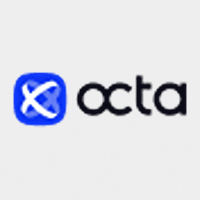Producer price changes in the United States are measured with the Producer Price Index. This important economic indicator is computed by taking a weighted average of the price changes observed in physical goods measured at the wholesale or producer level.
Furthermore, U.S. Core PPI excludes the more volatile price changes often seen in food and energy commodities since their price fluctuations can obscure the underlying trend in wholesale inflation.
These volatile components make up around 40% of overall PPI, so both the Federal Reserve Bank and both professional and beginning forex traders tend to focus to a greater extent on the more comprehensive PPI number to assess inflationary pressures within the U.S. economy.
Sometimes also known as “Wholesale Prices” or “Finished Goods PPI”, the PPI data is widely considered a leading indicator of inflationary pressures within an economy. As a result, it is often used by central banks as a justification for adjusting interest rates or taking other appropriate monetary policy measures.
Furthermore, since rising inflation generally results in a reduction in the purchasing power of money in an economy, central banks usually have controlling inflation within acceptable levels as one of their primary tasks. Central banks often do this by increasing interest rates to fight rising inflation and by reducing interest rates in a low inflation or deflationary environment.
Both the PPI and Core PPI are typically expressed on a monthly percentage change basis in the United States.
In addition, the data for each month is usually released by the U.S. Department of Labour around 15-17 days after the end of the month for which the data has been collected.
Related Articles
History and Components of the PPI
Historically, the PPI was formerly known as the Wholesale Price Index until its name was changed in 1978, and the indicator currently includes changes in the prices of all goods manufactured in the United States.
In addition, the U.S. PPI currently uses as a benchmark a fixed basket of goods prices from 1982 that is given an initial value of 100. This basket is then used to measure subsequent price increases.
The PPI is itself comprised of wholesale price data obtained from three stages of the manufacturing cycle. These components are the:
- PPI Commodity Index – or PPI crude that reflects price changes for raw materials like crude oil, steel and coal.
- PPI Stage of Processing Index – or the SOP reflects price changes for goods in the intermediate production stage which are then sold to producers that manufacture a finished product.
- PPI Industry Index – influences the Core PPI figure and reflects changes in the price of goods at the last manufacturing stage.
The weight for each item included in the index is determined based on the item’s importance in the economy. The index usually includes items such as: food, transportation, housing, recreation, medical care, clothing and education.
The Economic Effect of Changes in the PPI
The changes seen in the PPI can have a large effect on the U.S. economy. When the PPI of an economy is rising strongly, it tends to result in future inflation in the prices of consumer goods that discourage consumers from saving and also reduces their purchasing power.
In addition, benchmark interest rates tend to rise in an increasing PPI environment as central banks act to combat inflationary pressures. This tends to cause a contraction in borrowing for the purpose of expansion.
On the other hand, a declining PPI that is typical of deflationary periods tends to signal an upcoming economic slowdown in a country. Benchmark interest rates set by central banks also usually come down during such low or negative inflationary periods in order to make borrowing less costly.
In addition to deviations of the most recent PPI number from expectations causing forex market volatility, revisions to previous numbers can also have a significant market impact.
The Best Forex Demo Accounts
To master the forex markets it is important to practice your chosen strategy. This is where a forex demo account comes in: It allows you to practice your new strategy without risking any of your hard-won capital. Below we have picked out some of our favourite forex demo accounts to help you out.
| Broker | Features | Regulator | Platforms | Next Step | |
|---|---|---|---|---|---|
 Your capital is at risk
Founded: 2014 Your capital is at risk
Founded: 2014 |
|
FSPR | MT4 | ||
 Your capital is at risk
Founded: 2006 Your capital is at risk
Founded: 2006Europe* CFDs ar... |
|
ASIC, FSA, FSB, MiFID | MetaTrader4, Sirix, AvaOptions, AvaTrader, Mirror Trader | ||
 Between 74-89% of CFD traders lose
Founded: 2010 Between 74-89% of CFD traders lose
Founded: 2010Between 74-89 % of retail investor accounts lose money when trading CFDs |
|
ASIC, FCA | MetaTrader 4, MetaTrader 5, cTrader | ||
 Your capital is at risk
Founded: 2011 Your capital is at risk
Founded: 2011 |
|
CySEC, FSC, FSCA, MISA | MT4, MT5, OctaTrader | ||
 Your capital is at risk
Founded: 2009, 2015, 2017 Your capital is at risk
Founded: 2009, 2015, 2017 |
|
ASIC, CySEC, IFSC | MT4 Terminal, MT4 for Mac, Web Trader, iPhone/iPad Trader, Droid Trader, Mobile Trader, MT5 | ||
 Your capital is at risk
Founded: 2006 Your capital is at risk
Founded: 2006 |
|
CySEC, DFSA, FCA, FSB, SIA | MetaTrader4, MetaTrader5, cTrader, FxPro Edge (Beta) | ||
Further reading:
More fundamental analysis articles.
Read also about how the CPI data affects the forex market.
In general, what impact does inflation measures have on the forex market?
How does the gold price affect inflation?
Forextraders' Broker of the Month
BlackBull Markets is a reliable and well-respected trading platform that provides its customers with high-quality access to a wide range of asset groups. The broker is headquartered in New Zealand which explains why it has flown under the radar for a few years but it is a great broker that is now building a global following. The BlackBull Markets site is intuitive and easy to use, making it an ideal choice for beginners.
